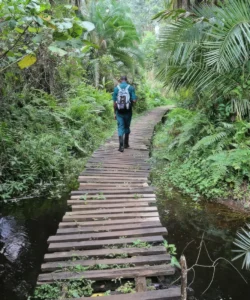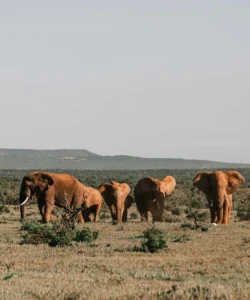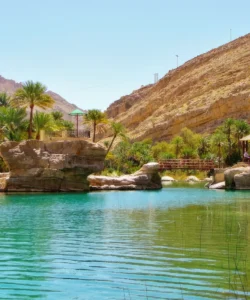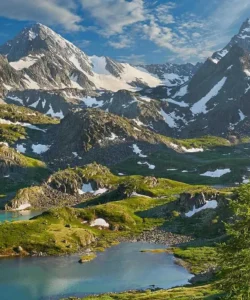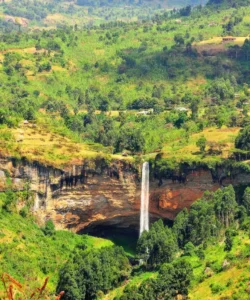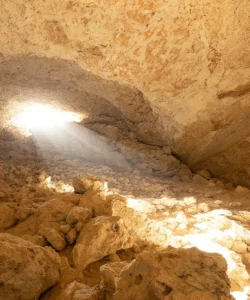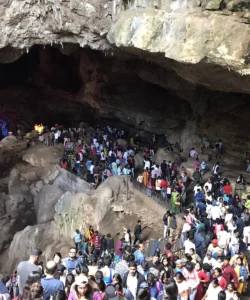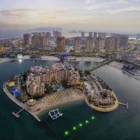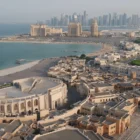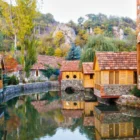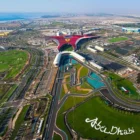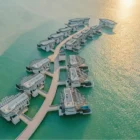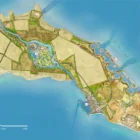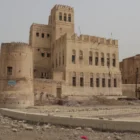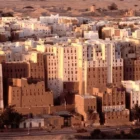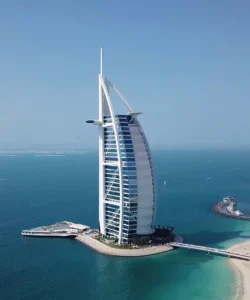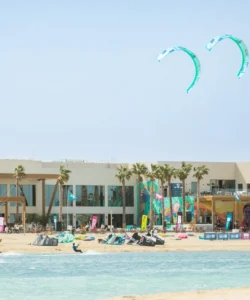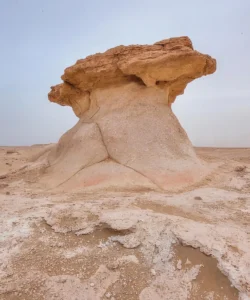The Al Thakira Mangroves represent one of Qatar’s most surprising and precious natural treasures. In a nation renowned for its vast desert landscapes, this large expanse of dense, green forest provides a stunning and vital contrast. As the oldest and largest mangrove forest in the country, the Al Thakira reserve is a thriving ecosystem that flourishes in the salty tidal waters of the Arabian Gulf. This lush, green sanctuary serves as a critical habitat for a diverse range of wildlife and offers a tranquil escape for nature lovers, adventurers, and those seeking a different side of Qatar’s natural beauty.
Listen to an introduction about Al Thakira Mangroves
Name and Address
- Name: Al Thakira Mangroves (sometimes spelled Al Dhakira).
- Address: Located on the northeastern coast of Qatar, just north of the city of Al Khor and approximately 64 kilometers from Doha.
How to Get There
Getting to Al Thakira is a straightforward drive from Doha, with the final approach bringing you to the edge of this unique coastal ecosystem.
- By Car: The journey from Doha takes about an hour. You will drive north on the Al Khor Coastal Road. Just past Al Khor, signs will direct you towards Al Thakira and the adjacent Purple Island (Jazirat bin Ghannam), which is the main access point for visitors.
- Vehicle Recommendation: A standard sedan can easily reach the main parking area near the Purple Island causeway. However, if you plan to explore the surrounding dirt tracks or coastal areas beyond the main path, a 4×4 vehicle is recommended.
- Guided Tours: This is a very popular option, especially for those interested in kayaking. Tour operators in Doha provide transportation and all necessary equipment for activities like guided kayaking tours through the mangrove channels.
Landscape and Ecosystem
The landscape of Al Thakira is a vibrant coastal wetland, a stark and beautiful contrast to the inland desert.
- Unique Ecosystem: The reserve is a complex coastal system that includes mangrove swamps, tidal creeks, mudflats (sabkha), and a shoreline. The dominant species is the Avicennia marina, or grey mangrove, which is uniquely adapted to thrive in high-salinity seawater and extreme temperatures. These trees have a remarkable filtration system and distinctive aerial roots (pneumatophores) that stick up out of the mud to absorb oxygen.
- A Green Oasis: The sight of the dense, evergreen forest against the backdrop of the desert and the blue waters of the Gulf is striking. A long wooden boardwalk snakes its way from the mainland, across the water, and onto Purple Island, allowing visitors to walk directly through the ecosystem without disturbing it.
- Haven for Wildlife: The mangroves create a crucial habitat that supports a rich diversity of life. The calm, nutrient-rich waters serve as a nursery for numerous species of fish, crabs, and crustaceans. Above the water, the forest is a paradise for birdwatchers.
What Makes It Famous
Al Thakira Mangroves are famous for being a surprising natural anomaly in a desert country and a premier destination for eco-tourism and soft adventure.
- A Natural Surprise: In a country overwhelmingly characterized by desert, the existence of such a large, thriving forest is its primary claim to fame. It showcases Qatar’s hidden ecological diversity.
- Kayaking and Paddleboarding: The most popular activity at Al Thakira is kayaking. Paddling through the serene, winding channels offers an immersive way to experience the forest, get close to nature, and see wildlife.
- Birdwatching: The reserve is a vital stopover for migratory birds and a home for resident species. It’s one of the best places in Qatar to spot birds like herons, egrets, terns, and, during the winter months, flocks of flamingos.
- Purple Island (Jazirat bin Ghannam): This historic island, connected by the boardwalk, is an attraction in itself. It was once a site for dye production in the Kassite period and offers walking trails, small beaches, and beautiful views of the surrounding mangroves.
- Tranquility and Scenery: It offers a peaceful escape from the city. The combination of lush greenery, calm waters, and unique wildlife provides a serene environment for walking, photography, and family picnics.
Differences from Other Sites
Al Thakira Mangroves offer a completely different experience from Qatar’s other natural and man-made landmarks.
- Lush Forest vs. Arid Desert: This is the most obvious distinction. While sites like Khor Al Adaid and the Singing Sand Dunes celebrate the beauty of the desert, Al Thakira is a celebration of a lush, green, water-based ecosystem.
- Focus on Ecology and Wildlife: The primary attraction here is the living ecosystem—the trees, the birds, and the marine life. This contrasts with the geological focus of the Zekreet Mushroom Rocks or the acoustic phenomenon of the Singing Sand Dunes.
- Activity Type: The main activities are calm and water-based, like kayaking and birdwatching. This is a stark contrast to the high-adrenaline adventure of dune bashing required to reach Khor Al Adaid or the interactive sliding needed to make the Singing Sand Dunes perform.
- A Green Lung for a Desert Nation: Al Thakira serves as a vital “green lung,” playing a crucial role in carbon sequestration, air filtration, and coastal protection. This ecological importance gives it a different kind of significance compared to other natural sites that are primarily geological wonders.
Al Thakira Mangroves Photos:
































